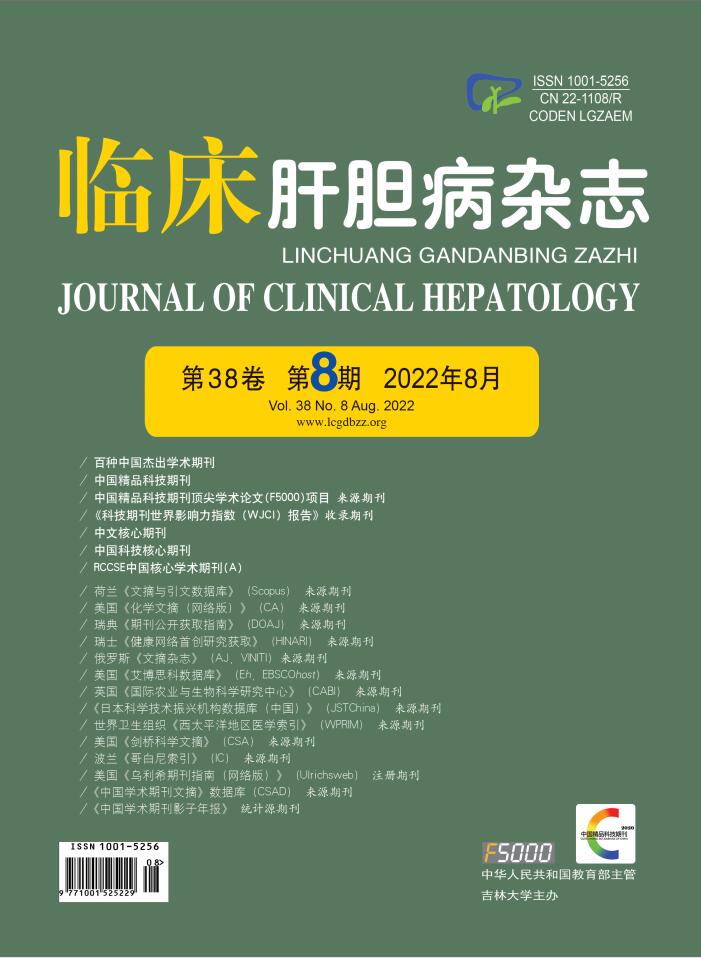| [1] |
Chinese Society of Hepatology, Chinese Medical Association. Chinese guidelines on the management of liver cirrhosis[J]. J Clin Hepatol, 2019, 35(11): 2408-2425. DOI: 10.3969/j.issn.1001-5256.2019.11.006. |
| [2] |
|
| [3] |
BAO XY, XU BB, FANG K, et al. Changing trends of hospitalisation of liver cirrhosis in Beijing, China[J]. BMJ Open Gastroenterol, 2015, 2(1): e000051. DOI: 10.1136/bmjgast-2015-000051. |
| [4] |
Fatty Liver Expert Committee, Chinese Medical Doctor Association, National Workshop on Fatty Liver and Alcoholic Liver Disease, Chinese Society of Hepatology, Chinese Medical Association. Guidelines of prevention and treatment for alcoholic liver disease: a 2018 update[J]. J Clin Hepatol, 2018, 34(5): 939-946. DOI: 10.3969/j.issn.1001-5256.2018.05.006. |
| [5] |
SHIBA S, NAKAMOTO N, CHU PS, et al. Acetaldehyde exposure underlies functional defects in monocytes induced by excessive alcohol consumption[J]. Sci Rep, 2021, 11(1): 13690. DOI: 10.1038/s41598-021-93086-y. |
| [6] |
SHEN T, ZHAO YQ. Criteria for diagnosis and efficacy of hematological diseases[M]. Fourth Edition. Beijing: Science Press, 2018.
沈悌, 赵永强. 血液病诊断及疗效标准[M]. 4版. 北京: 科学出版社, 2018.
|
| [7] |
LI M, WANG ZQ, ZHANG L, et al. Burden of cirrhosis and other chronic liver diseases caused by specific etiologies in china, 1990-2016: findings from the global burden of disease study 2016[J]. Biomed Environ Sci, 2020, 33(1): 1-10. DOI: 10.3967/bes2020.001. |
| [8] |
WANG H, MA L, YIN Q, et al. Prevalence of alcoholic liver disease and its association with socioeconomic status in north-eastern China[J]. Alcohol Clin Exp Res, 2014, 38(4): 1035-1041. DOI: 10.1111/acer.12321. |
| [9] |
WANG FS, FAN JG, ZHANG Z, et al. The global burden of liver disease: the major impact of China[J]. Hepatology, 2014, 60(6): 2099-2108. DOI: 10.1002/hep.27406. |
| [10] |
DUAN FF, YANG S. Attention should be paid on basic and clinical research of alcoholic liver disease[J/CD]. Chin J Liver Dis (Electronic Version), 2021, 13(4): 1-4. DOI: 10.3969/j.issn.1674-7380.2021.04.001. |
| [11] |
MO X. A survey of prevalence of anemia in patients with liver diseases: A retrospective study[D]. Changchun: Jilin University, 2018.
莫雪. 肝病患者贫血状况调查: 一项回顾性研究[D]. 长春: 吉林大学, 2018.
|
| [12] |
BAGER P, DAHLERUP JF. Lack of follow-up of anaemia after discharge from an upper gastrointestinal bleeding centre[J]. Dan Med J, 2013, 60(3): A4583.
|
| [13] |
SIMBRUNNER B, BEER A, WÖRAN K, et al. Portal hypertensive gastropathy is associated with iron deficiency anemia[J]. Wien Klin Wochenschr, 2020, 132(1-2): 1-11. DOI: 10.1007/s00508-019-01593-w. |














 DownLoad:
DownLoad: